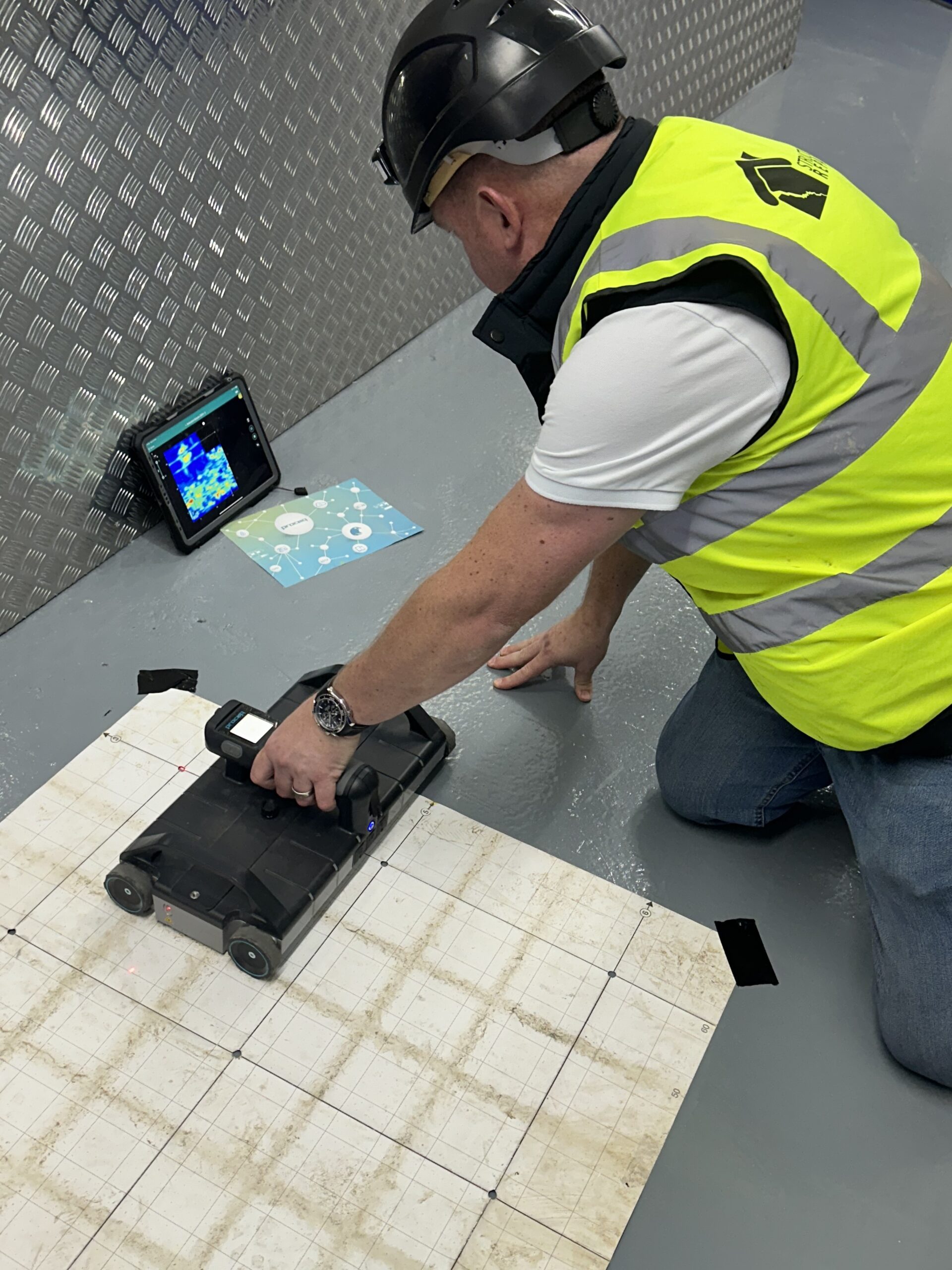Comprehensive Guide to Concrete Scanning Technologies
Comprehensive Guide to Concrete Scanning Technologies
Blog Article
Reveal the Transformative Power of Concrete Scanning in Making The Most Of Efficiency and Security
Concrete scanning has become an important device in the construction sector, supplying unrivaled advantages in improving project performance and making sure security requirements. By making use of innovative technology, concrete scanning enables professionals to see past the surface area, uncovering hidden complexities that can influence the structural honesty of a building. The transformative power of concrete scanning hinges on its capacity to provide in-depth insights and real-time data, reinventing exactly how jobs are prepared and implemented. As we dive into the intricacies of this innovative strategy, a world of opportunities opens up, showcasing a brand-new era of building methods that prioritize precision and security.
Importance of Concrete Scanning
Guaranteeing the architectural stability and security of building jobs begins with the important step of performing comprehensive concrete scanning. Concrete scanning is a non-destructive technique used to detect and map subsurface aspects within concrete frameworks.
In addition, concrete scanning helps in maximizing job timelines and spending plan by staying clear of unexpected costs and hold-ups that may develop due to unanticipated blockages within the concrete. Inevitably, spending in detailed concrete scanning is a positive technique that boosts both performance and safety and security in building projects.
Just How Concrete Scanning Functions
Concrete scanning operates as an essential tool in construction tasks by using sophisticated innovations to find and map subsurface aspects without creating structural damages. Ground Permeating Radar (GPR) and Electromagnetic Induction (EMI) are two main methods utilized in concrete scanning. GPR works by giving off high-frequency radar pulses into the surface, which jump back when they experience subsurface objects or gaps. The time considered the signal to return suggests the depth and place of the items. EMI, on the various other hand, makes use of electro-magnetic areas to identify variances in product structures, such as identifying rebar or channels within concrete frameworks.
Throughout the scanning process, the data gathered is evaluated in real-time, enabling instant identification of potential risks or challenges underneath the surface. By utilizing these innovative technologies, concrete scanning significantly decreases the danger of pricey damages and injuries on building and construction sites.
Advantages of Concrete Scanning
Utilizing innovative scanning innovations in building jobs uses a plethora of advantages, boosting both efficiency and security on-site. Among the primary advantages of concrete scanning is the capacity to find and find ingrained items such as rebar, post-tension cables, and channels accurately. By identifying these aspects before boring or cutting into concrete structures, the risk of accidental strikes is substantially lowered, avoiding possible injuries to workers and damages to the framework itself. Additionally, concrete scanning helps in preparation and designing much more properly, as it provides exact details about the place and depth of architectural components.

Study: Concrete Scanning Success

In an additional case, a building firm made use of 3D concrete scanning to evaluate the condition of maturing concrete structures in a historical building. The comprehensive scans supplied useful insights into the degree of damage and helped focus on maintenance initiatives successfully. By proactively addressing locations of issue identified via scanning, the company had the ability to expand the lifespan of the framework and make sure owner security.
These case research studies underscore the transformative power of concrete scanning in boosting effectiveness, precision, and security in construction projects.
Implementing Concrete Scanning in Projects
Carrying out sophisticated scanning technologies throughout construction projects has actually come to be progressively essential for enhancing precision and security. By incorporating concrete scanning right into project planning and execution, construction teams can identify potential dangers, such as rebar or post-tension cable televisions, concealed within concrete over here frameworks. This proactive approach lessens the risk of crashes, hold-ups, and expensive rework, eventually leading to a lot more reliable task timelines and budget plans.
To apply concrete scanning successfully, project supervisors should collaborate closely with skilled scanning specialists to determine one of the most suitable scanning methods for the certain task requirements. Engaging scanning experts from the very early phases of a task makes it possible for the group to create thorough scanning plans that address key locations of problem and make certain thorough data collection.
In addition, incorporating concrete scanning right into regular job process can enhance decision-making procedures, as real-time scan data gives immediate understandings right into the problem of concrete structures - Concrete Scanning. This data-driven method assists in educated analytical and allows teams to make adjustments immediately, promoting a culture of effectiveness and safety throughout the project lifecycle

Final Thought
Finally, concrete scanning plays an essential role in enhancing performance and safety and security in building and construction tasks. By making use of sophisticated innovation to map and discover out underlying structures within concrete, this procedure aids to protect against expensive blunders, guarantee architectural stability, and decrease threats on website. With the why not try this out capability to reveal surprise elements and supply precise information, concrete scanning verifies to be a useful device for enhancing task results and making the most of overall success.
Concrete scanning is a non-destructive approach check my site utilized to detect and map subsurface components within concrete frameworks. In addition, concrete scanning aids in optimizing project timelines and budget plan by avoiding unanticipated expenses and hold-ups that might develop due to unpredicted blockages within the concrete. One remarkable situation study entails a large-scale renovation job where concrete scanning played an essential function in making certain task success.In another situation, a building and construction business utilized 3D concrete scanning to examine the condition of aging concrete frameworks in a historic building. By incorporating concrete scanning into project preparation and execution, building and construction groups can determine potential threats, such as rebar or post-tension cables, concealed within concrete frameworks.
Report this page